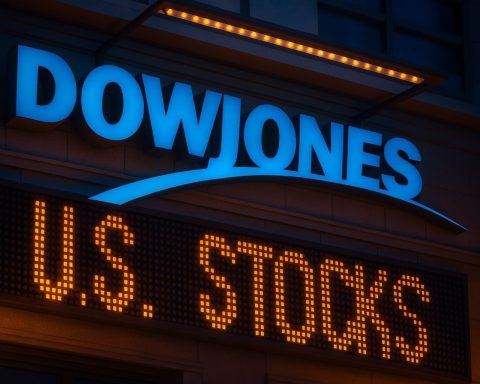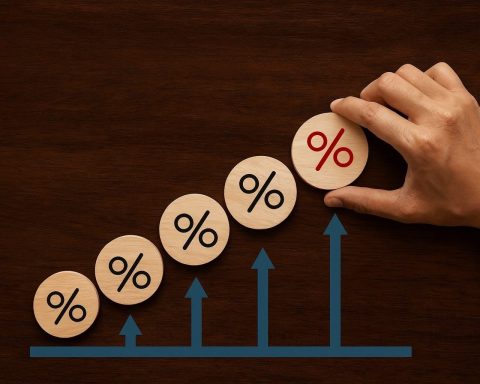Gold prices are back on the offensive today, 25 November 2025, after briefly stalling at the start of the week. Spot gold has traded in the $4,130–$4,175 per ounce range, not far from an intraday high above $4,140, its strongest level since 14 November, as traders ramp up bets that the US Federal Reserve will cut interest rates in December. [1]
At the same time, fresh US wholesale inflation data (PPI) show only moderate price pressures, reinforcing the idea that producer inflation is unlikely to derail rate cuts – a theme highlighted by Kitco’s latest gold market update. [2]
Key takeaways: gold price today
- Spot gold today: around $4,130–$4,175/oz, after touching a more-than-one-week high early in the session. [3]
- December Fed cut probability: markets now price roughly an 81% chance of a quarter-point cut at the 9–10 December FOMC meeting, up from about 40–42% a week ago. [4]
- US PPI (September, released today): headline producer prices +0.3% month-on-month, +2.7% year-on-year; “core” PPI (excluding food, energy and trade services) up just 0.1% m/m and 2.9% y/y – a relatively tame backdrop. [5]
- Gold’s 2025 performance: bullion is up around 50–55% year-to-date, having broken above $4,000/oz for the first time in history earlier this year. [6]
- Street forecasts: Bank of America now sees gold averaging $4,538/oz in 2026, with a potential path toward $5,000, if current macro trends persist. [7]
Gold tests one‑week highs as Fed hopes return
After three consecutive sessions of declines driven by a stronger dollar and wobbling rate-cut odds, gold has snapped back impressively.
On Monday, spot prices briefly slipped toward $4,050/oz as the US dollar index (DXY) hovered near a six‑month high and traders reassessed how soon the Fed would ease policy. [8]
But by late Monday and into early Tuesday, the mood flipped:
- Reuters reports that gold rose nearly 2% on Monday, then extended gains today to reach the highest level in more than a week, around $4,147/oz, despite a still‑firm US dollar. [9]
- MarketPulse (OANDA) notes that bullion is “currently trading at $4,118 per troy ounce”, having “started the week on an encouraging note” after finding support in Monday’s rally. [10]
- In India and the Gulf, local coverage highlights the same global trend, with spot prices translated into firmer domestic rates even as currency moves and local premiums add extra volatility. [11]
The result: gold is once again comfortably above $4,100, with investors treating Monday’s weakness as a relatively normal pullback within a powerful 2025 uptrend.
Why gold is rallying: dovish Fed signals and rising cut odds
The core driver behind today’s move is expectations for a December Fed rate cut, reignited by a pair of influential policymakers:
- Fed Governor Christopher Waller said on Monday that the US labor market has softened enough to justify another quarter-point rate cut in December, while stressing that further steps would depend on incoming data that were delayed by the government shutdown. [12]
- New York Fed President John Williams signalled late last week that rates could fall “in the near term”, challenging the more hawkish tone that had dominated Fed commentary in recent weeks. [13]
Those remarks marked a notable shift from earlier days, when other officials – such as Dallas Fed President Lorie Logan and regional Fed presidents in Chicago and Cleveland – had warned that cutting rates too quickly could be risky, briefly dragging the implied probability of a December cut down toward the high‑60s. [14]
Now, the pendulum has swung back:
- Futures pricing compiled by CME’s FedWatch Tool and multiple market reports show about an 81% chance of a 25 bps cut in December, and elevated odds of another move around January. [15]
For gold, this matters because lower policy rates reduce the opportunity cost of holding a non‑yielding asset. When yields fall or are expected to fall, investors are more willing to park capital in bullion, especially against a backdrop of economic uncertainty and geopolitical risk.
PPI shows “tame” producer inflation – good news for gold bulls
Today’s release of the US Producer Price Index (PPI) for September 2025, delayed by the recent government shutdown, added another layer of support for gold.
According to the Bureau of Labor Statistics:
- Headline PPI for final demand:
- +0.3% month‑on‑month in September (vs. ‑0.1% in August).
- +2.7% year‑on‑year.
- Core PPI (excluding food, energy and trade services):
- +0.1% m/m – softer than many analysts expected.
- +2.9% y/y. [16]
The monthly rise was driven largely by a sharp rebound in energy prices, especially gasoline, while service‑sector prices were flat overall, suggesting limited broad‑based inflation pressure along the production chain. [17]
Market commentary has quickly converged on the same conclusion:
- Analysts at several outlets describe wholesale inflation as “fairly tame” and unlikely to change the Fed’s near‑term path, framing the PPI report as a green light – or at least not a red light – for a December cut. [18]
- Kitco’s coverage explicitly argues that producer inflation poses little threat to the Fed’s ability to continue easing, reinforcing bullish momentum in gold. [19]
For gold traders, “tame PPI” means less fear of a hawkish backlash from the Fed. If inflation at the wholesale level is contained while growth and employment soften, policymakers have more room to cut – a combination that typically supports higher bullion prices.
A stronger dollar, but gold shrugs it off
One striking feature of the current move is that gold is rallying even though the US dollar remains strong.
- Earlier this week, the DXY dollar index traded near a six‑month high, contributing to Monday’s soft patch in bullion, as a pricier dollar usually makes gold more expensive for holders of other currencies. [20]
- Even today, Reuters’ FX coverage describes the dollar as “steady” and on track for a move higher against most major currencies, especially the yen, despite rising rate‑cut expectations. [21]
Yet gold is holding above $4,100 anyway. OANDA’s MarketPulse team points out that, in the current macro environment, both the dollar and gold are benefiting from safe‑haven demand and from uncertainty created by delayed economic data and the long US government shutdown. [22]
In other words, “gold can rally despite the best efforts of a stronger dollar” when:
- Investors worry about growth, politics or financial stability.
- Real yields are expected to fall as central banks pivot toward easing.
That is essentially the regime markets now see heading into the December Fed meeting.
Banks and strategists eye $5,000 gold in 2026
The latest price action is feeding into increasingly bold medium‑term forecasts.
A detailed report summarized by Mint (Livemint) says Bank of America now expects: [23]
- An average gold price of about $4,538/oz in 2026.
- A plausible scenario in which gold reaches $5,000/oz, assuming:
- Persistently elevated government debt,
- Lower interest rates over time,
- Ongoing macro uncertainty and safe‑haven demand, and
- Continued questions around US fiscal and monetary policy.
The same report notes that gold is already up around 54% this year, making 2025 one of its strongest years in more than a decade and pushing prices to multiple record highs above $4,000. [24]
Other analysts, including those quoted in Kitco’s opinion and outlook pieces, float even more extreme long‑term scenarios – some discussing paths toward $10,000/oz if inflation, currency debasement and financial repression all intensify – but those are framed as tail‑risk or “what‑if” paths, not base cases. [25]
Technical picture: key levels for gold traders
From a charting perspective, gold’s breakout back above $4,100 has not yet produced a fresh all‑time high, but technical support looks robust.
According to MarketPulse’s latest XAU/USD technical analysis: [26]
- Immediate support is clustered around:
- $4,056/oz – roughly the 20‑day simple moving average,
- The $4,000/oz round number (a major psychological level),
- Deeper support near $3,889/oz, a recent swing low.
- Upside targets/Resistance:
- $4,240/oz – a prior support/resistance zone,
- $4,381/oz – the vicinity of recent all‑time highs.
MarketPulse argues that as long as prices stay above roughly $4,050, gold remains in a constructive uptrend, with the current pullbacks looking more like “higher lows” within a larger bullish structure.
By contrast, some short‑term forecasters still see scope for range‑bound trading between about $4,000 and $4,100 if incoming data don’t clearly support the doves at the Fed. [27]
What today’s move means for investors
For investors and traders, today’s gold action is part of a bigger story that stretches well beyond one data release or one Fed speech.
Near‑term: highly data‑dependent
Over the next few days, markets will be watching:
- US retail sales (delayed September figures),
- The full PPI and related inflation details,
- Consumer confidence and housing data, and
- Any fresh remarks from key Fed officials. [28]
Bullish scenario (for gold):
- Data confirm cooling demand and contained inflation,
- Fed officials reinforce the possibility of a December cut,
- FedWatch probabilities stay high or rise further.
In that case, gold could plausibly re‑test resistance near $4,240 and, if momentum accelerates, make another run at the record area around $4,380–$4,400.
Bearish or consolidation scenario:
- Data surprise to the upside – especially if consumer spending is strong or producer prices show more persistent pressure,
- Fed rhetoric turns more cautious about cutting too soon.
Then, the market could dial back rate‑cut expectations, sending gold back toward support in the $4,050–$4,000 region, or even lower if positioning is crowded on the long side.
Bigger picture: gold as a macro hedge
Regardless of the next few sessions, several structural forces that helped push gold above $4,000 remain in play:
- Elevated public debt and deficits in the US and elsewhere,
- A shift toward looser monetary policy after one of the fastest tightening cycles in decades,
- A world of intermittent geopolitical shocks, from wars to trade disputes,
- Ongoing interest in gold from central banks and long‑horizon investors seeking diversification. [29]
Those themes underpin the medium‑term bullish forecasts from banks like BofA, even as they warn that a surprise hawkish turn by the Fed remains the key downside risk.
What to watch next if you follow gold
If you track gold prices or invest in related products (ETFs, miners, physical bullion), the main signposts through the end of 2025 will likely be:
- The December 9–10 Fed meeting – the final policy decision of the year. [30]
- The trajectory of US inflation, especially core PPI and core PCE, not just headline CPI. [31]
- US dollar and real yields – persistent weakness here would usually reinforce gold’s appeal. [32]
- Any signs of demand shifts in key markets such as India, China and the Middle East, where local buying patterns can amplify or dampen global trends. [33]
As always, this article is for information, context and education only. It is not investment advice. Anyone considering exposure to gold or other precious metals should evaluate their own risk tolerance and, ideally, consult a qualified financial adviser.
References
1. www.tradingview.com, 2. www.bls.gov, 3. www.tradingview.com, 4. www.reuters.com, 5. www.bls.gov, 6. www.livemint.com, 7. www.livemint.com, 8. www.tradingview.com, 9. www.tradingview.com, 10. www.marketpulse.com, 11. www.newindianexpress.com, 12. www.reuters.com, 13. www.tradingview.com, 14. www.tradingview.com, 15. www.reuters.com, 16. www.bls.gov, 17. www.bls.gov, 18. www.marketwatch.com, 19. www.kitco.com, 20. www.tradingview.com, 21. www.reuters.com, 22. www.marketpulse.com, 23. www.livemint.com, 24. www.livemint.com, 25. www.kitco.com, 26. www.marketpulse.com, 27. m.economictimes.com, 28. www.reuters.com, 29. www.kitco.com, 30. www.reuters.com, 31. www.bls.gov, 32. www.reuters.com, 33. www.newindianexpress.com










